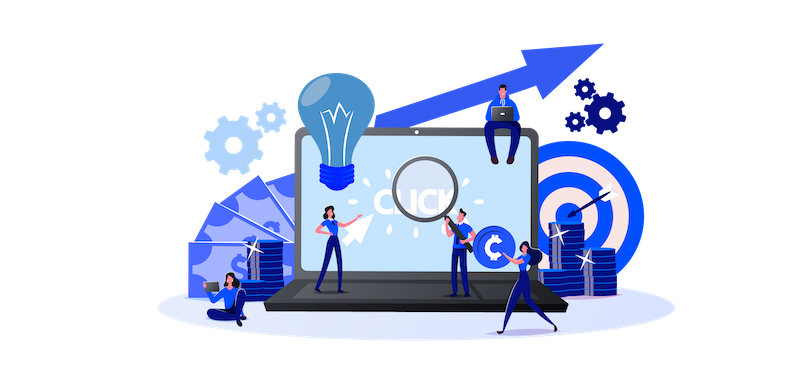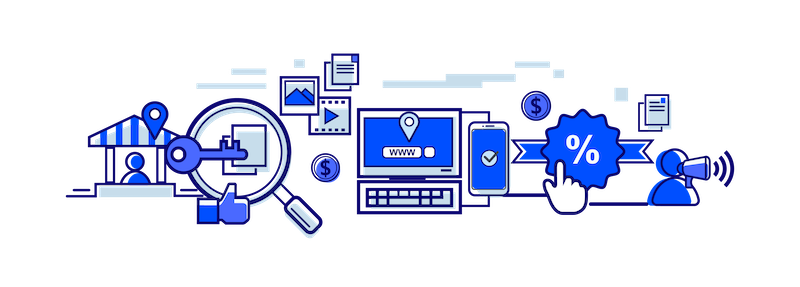Getting Started With Performance Marketing
Last Update: 26 May 2022
What Is Performance Marketing?

One of the most important aspects of digital marketing today is performance marketing. It’s one of the fastest-growing segments of the advertising industry, and it’s also one of the most effective forms of digital advertising.
Performance marketing is a comprehensive term for online marketing and advertising programs where advertisers pay only when a specific action occurs. These actions can include a generated lead, a sale, a click, and more.
Advertisers want to know exactly how much they’re paying for each action they receive from their campaigns, so they can accurately measure their return on investment (ROI). Performance marketing gives them this information by tracking the cost per acquisition (CPA) or cost per click (CPC) — essentially how much money they’ve spent on an ad campaign divided by how many times people have clicked on those ads or made purchases as a result.
Many companies use performance marketing because it allows them to focus on conversions instead of impressions or clicks alone. For example, if you buy an ad that gets 1 million impressions but only 10 people click through to your website or make a purchase, then your campaign failed miserably because it didn’t generate any revenue for you.
How do performance marketing platforms work?

Performance marketing is the umbrella term for a wide range of digital marketing strategies, which all work to drive business results by measuring and optimizing performance. The four groups that are involved in the creation and execution of successful performance marketing campaigns are:
The advertiser (you): You have a product or service that you want to sell, and you need help getting it in front of people who are ready to buy it.
The publisher (website owners): Your ads will appear on websites, blogs, videos, mobile apps, etc., so you need publishers who can provide those venues for your ads.
The network (Google): Google’s job is to connect advertisers with publishers through its AdWords platform and other services.
The agency (us!): We’ll help you navigate the complexities of online advertising so you can focus on what matters most — your business goals.
How to Measure Performance Marketing?

There are many factors which affect the performance of your marketing campaigns. Some of these factors can be controlled by marketers, such as the quality of your landing pages or the relevance of your ads. Others are not under your control, such as the quality of traffic or the number of conversions.
Performance marketing is a key part of digital marketing, but it is different to other types of online marketing. A defining element of performance marketing is ROI (return on investment) – every activity and action is measured, reported and analyzed against pre-defined KPIs (key performance indicators). This is how the performance of a campaign can be understood and optimized towards improving performance.
A typical performance marketing campaign will include:
Key Performance Indicators (KPIs)
These are the goals for each campaign or for each channel within a campaign.
ROAS (Return on Ad Spend) or ROI (Return on Investment)
This shows how much revenue you have generated compared to how much was spent on advertising.
CPA (Cost Per Action)
CPA stands for Cost Per Action, and it measures campaign performance according to a specific desired action you want the target audience to take, such as downloading an ebook, signing up or subscribing, purchasing an item, or some other action. In performance marketing, the action taken by potential customers is considered the most important tangible and measurable result, so CPA is one of the most important and popular metrics too.
CPM (Cost Per Mille)
CPM stands for Cost Per Mille, or Cost Per Thousand, and it is the cost the advertiser pays for 1000 impressions of a digital ad. In other words, it is the price for every 1000 times an ad is shown to viewers. CPM does not measure an action taken by viewers; it only determines the price of getting the ad shown. Some performance marketers are focusing less on CPM and more on metrics that have a concrete, action based meaning.
CTR (Click Thru Rate)
CTR is the percentage of people viewing your ads who clicked on them. This is important because it’s one way to measure how well your ad performs with your target audience. If you have high CTRs, this means that you are reaching your target audience with what they want to see, which leads to more conversions and sales.
LTV (Lifetime Value)
The term “Lifetime Value” (LTV) refers to the net profit that can be generated by a customer over their lifetime. LTV is an essential metric for measuring performance marketing, since it provides valuable insights into the profitability and return on investment of various marketing channels. LTV can be calculated by multiplying the average spend per customer (ACV) with the number of acquired customers during a given period (Cohort Analysis).
Conversions
Conversions are the most important metric to measure performance marketing. Conversions require actions from the user that are more than clicks. For example, a user clicks the CTA of your ad. Conversions take a step further from CPC as users need to do a specific action like complete an online purchase, sign up for a newsletter, or call your business.
How to Build a Performance Marketing Strategy
Performance marketing is a very broad term. It covers a lot of different types of marketing channels, from paid search (such as Google AdWords) to email marketing, retargeting and affiliate marketing. There are so many different types of performance marketing channels and campaigns, so there is no single way to do it. However, these are the main steps to build a performance marketing strategy of any kind and for any audience. Use them as a guide to get your performance campaign running towards success.
Step 1 : Define your goals
Before you start building a strategy for your audience, it’s important that you define your goals clearly and in detail. This will help you keep track of how well your campaigns are performing over time and allow you to adjust accordingly if necessary. Here are some common examples:
- Drive traffic to a website or landing page
- Generate leads/sales
- Increase brand awareness
Step 2: Choose your digital channel(s)
In performance marketing, it is wise to diversify the channels you use, rather than focusing exclusively on one channel. This helps spread campaign exposure and reach, broadening the chances for success. Whether it’s affiliate marketing, native advertising, or social media platforms, look for channels that specialize in your conversion type and where you are most likely to find your target audience.Check our blog about Marketing Channel for your business.
Step 3: Identify your audience
Knowing who you want to reach is crucial in performance marketing. By having a clear idea of who will be interested in what you are selling and why they would buy from you instead of your competition, it will be easier to figure out which channels will suit your needs best.
Step 4: Create buyer personas
Buyer personas are fictional representations of ideal customers based on research about their demographics (age, gender) as well as their online behavior and interests (social media profiles). They help marketers understand their audience better and cater their campaigns accordingly by using language that resonates with this specific persona.
Step 5: Create and launch the campaign
A lot of the work of performance marketing goes into creating campaigns – identifying the target audience, understanding their pain points and desires, and crafting ads and messaging to address their needs and grab their attention. The more you understand the target audience and how the product or service can appeal to them, the easier it will be to create the best ad copy, design and scheduling. And of course, the technical aspect of the campaigns, such as ad sizes, copy character limits, and acceptable images, also depend on the particular platform or channel you are using.
Step 6: Measure everything!
After you have launched your campaign(s), it’s time to start measuring everything! The first step is to set up tracking pixels on your website so that you can see where traffic came from. This way you can compare different channels against each other and see which ones are generating more conversions (i.e., sales). Some channels will be easier than others at helping you determine this information; Facebook Pixel is a great tool for this purpose because it allows you to target specific users who have visited your site within a certain timeframe after clicking on an ad from Facebook.
Benefits of Performance Marketing
Native advertising is the perfect example of performance marketing – advertisers create ad campaigns for a specific conversion goal, and only pay for clicks or other conversion actions. Compare this to a TV ad, for example, which runs for a certain period and frequency, however there is no guarantee as to how many consumers will see it or react to it.
This gets to the heart of the benefits of performance marketing. Performance marketing focuses on tracking and attribution, which gives marketers much more control over their budget and ROI.
Here are the top 3 reasons why performance marketing is the new marketing:
1. Control over budget and ROI:
Performance marketers have full control over their budget because they only pay when they get results. This allows them to scale up or down based on audience engagement and ROI measures. It also means that brands can spend more on content that drives the best results, rather than spending money on “clicks” from consumers who may not be interested in their product or service anyway.
2. Better targeting:
Performance marketers are able to target specific audiences with laser-like precision, allowing them to get much more effective results than traditional approaches like PPC advertising or print media. They can also use technology like retargeting to reach people who have already shown interest in a brand by visiting its website or social media pages, which reduces waste and provides higher quality leads for sales teams.
3. Better measurement tools:
Performance marketers have access to more sophisticated tools than ever before, including analytics dashboards that track every aspect of an ad campaign so they know exactly how many conversions each element generated. This allows them to adjust their campaigns on the fly and get better results at lower costs.
Conclusion
In the end, we believe that performance marketing is here to stay, and should not be ignored or overlooked. More and more businesses are turning towards performance marketing as a way to succeed online and maximize their return on investment.
Performance marketing is a complex practice. Because of this, you will want to work with a performance marketing agency to ensure your campaign follows best practices and is optimized for success. We are happy to discuss how our team atNeu Entity can help you optimize your performance marketing efforts and improve your ROI.
Let’s Talk!
If what you see here is relevant for you and can help you grow your business or organisation, we’d love to discuss further with you. Drop us a message or schedule an appointment with us.
